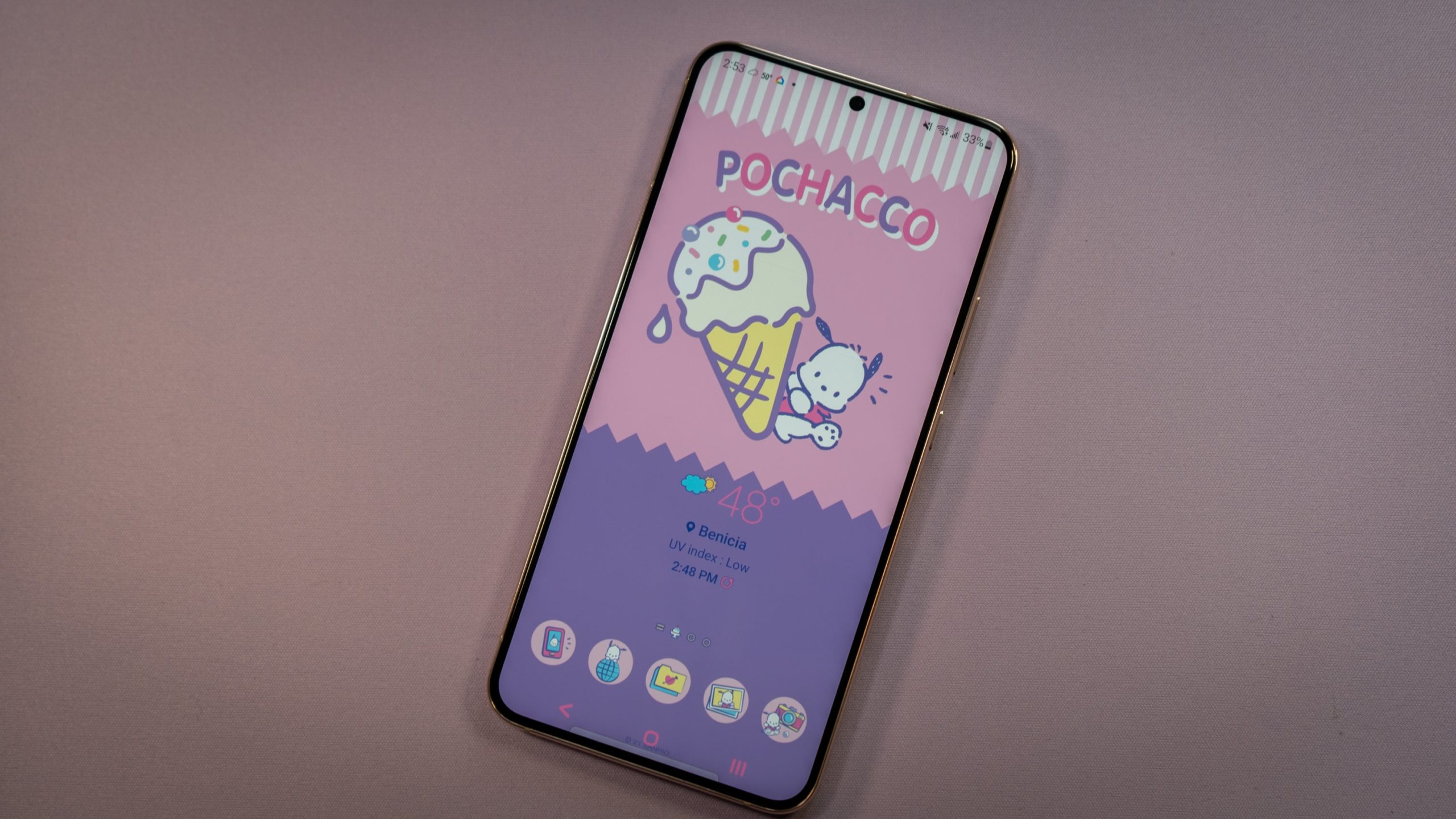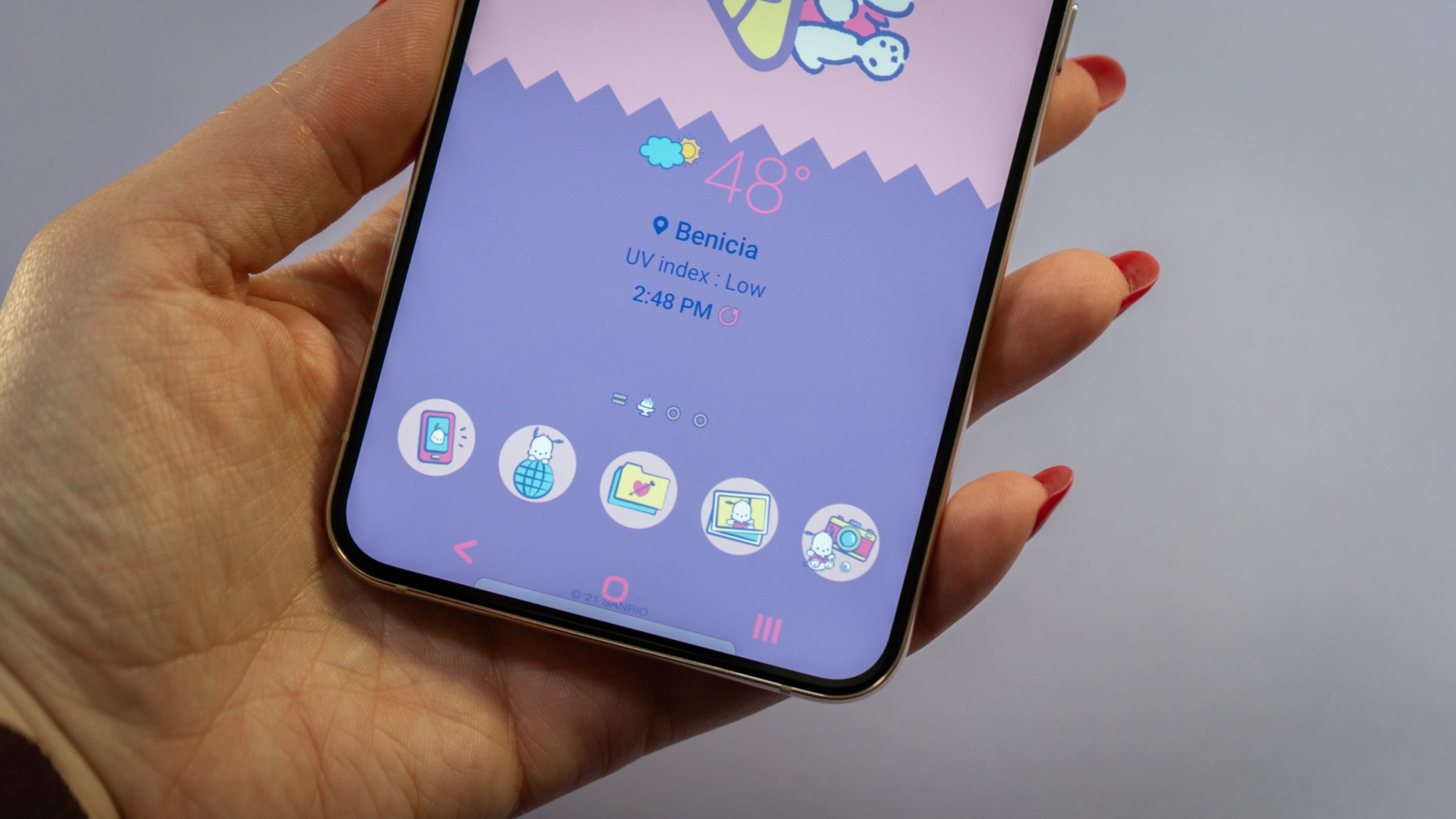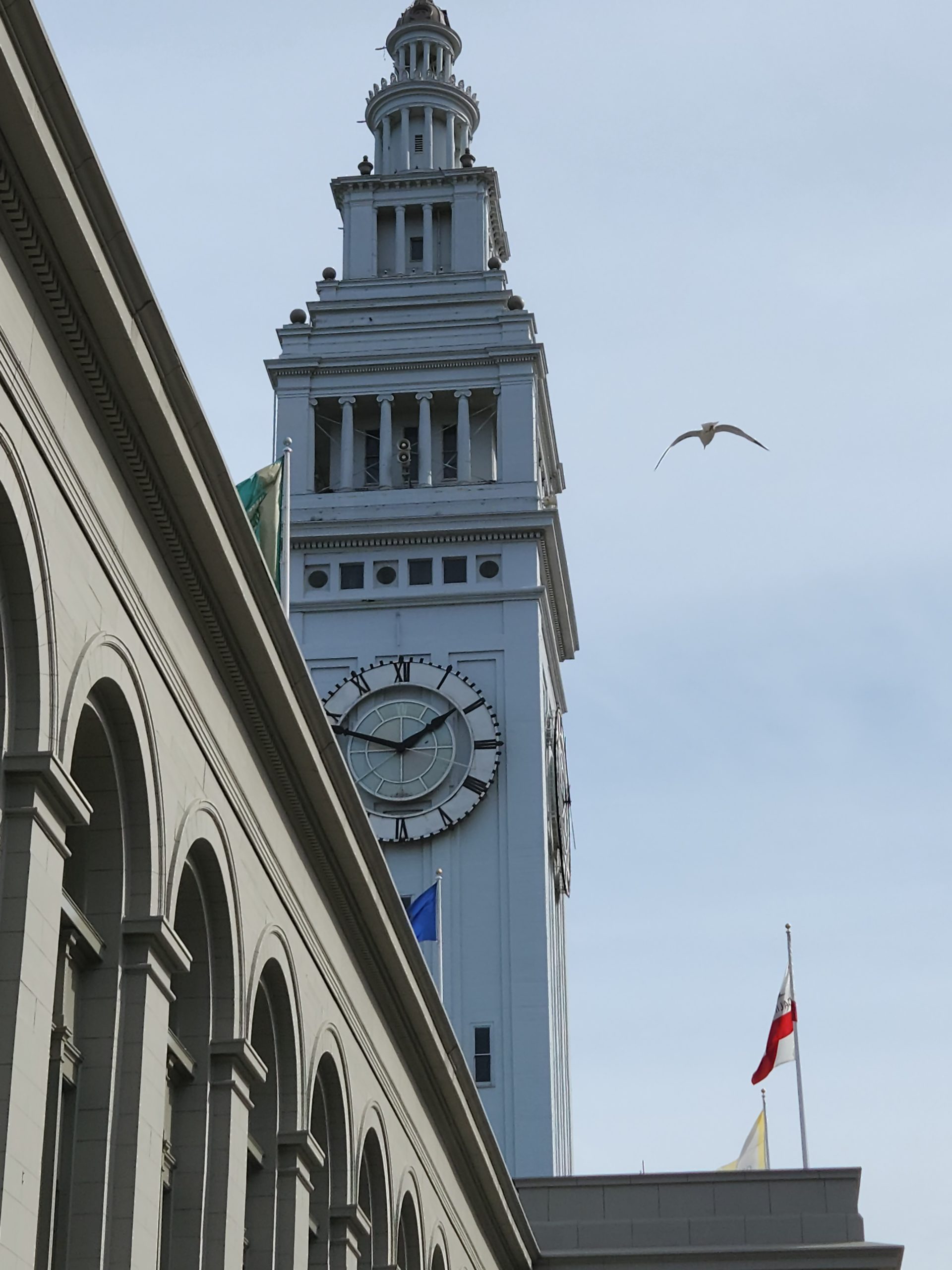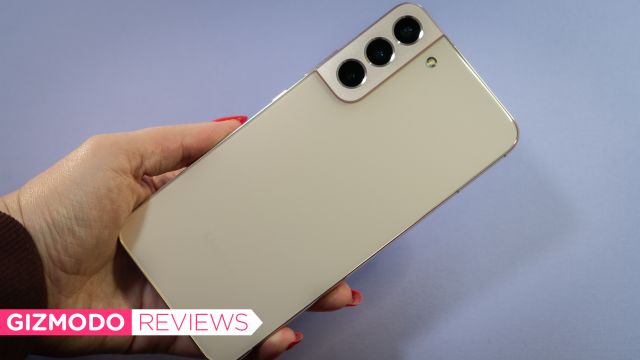If you want to buy a new Android phone and Google’s new Pixel lineup isn’t doing it for you, the Samsung Galaxy S22+ is the flagship to buy. While it’s not an over-the-top, cutting-edge phone like Samsung’s Galaxy S22 Ultra, it has many of the same bells and whistles, including an ultra digital zoom, a gorgeous display, and lengthy battery life.
It doesn’t have is the best camera that Android has to offer — Google’s Pixel 6 phones are still the best when it comes to photography, not to mention they cost a lot less less than what Samsung’s pricing the Galaxy S22 lineup. At a starting price of $1,249 for the regular Galaxy S22, and $1,549 for the higher-end Galaxy S22+, you really have to ask yourself if spending a little more on Samsung’s look and feel is worth the trade-off in battery and nighttime photography.
We’ve got a comparison review of the S22+ that will definitely help you choose which device you need (yes, need).

Samsung Galaxy S22 and Galaxy S22+
What is it?
Samsung's lower-priced 2022 flagships
Price
Galaxy S22 starts at $1,249; the Galaxy S22+ starts at $1,549
Like
Gorgeous display, good battery, stellar video capabilities
Dislike
Low-light photos could be better; smaller Galaxy S22 doesn't have Wi-Fi 6E and Ultra Wideband support
The Two Choices

Samsung offers the regular Galaxy S22 in two versions, one with a 6.1-inch screen and one with a 6.6-inch AMOLED display, the latter of which is featured here. The company offered the same choice with last year’s Galaxy S21 lineup. However, this move still seems plucked directly out of Apple’s playbook, considering the iPhone 13 Pro and Pro Max are available in similar sizes. The S22 and iPhone 13 lineup sort of look-alike from afar, especially if you only notice Samsung’s rounded edges.
The Galaxy S22+ is the perfect phone size for most people. It’s a little wider than the iPhone 13 Pro, and it’s technically half an inch smaller than the Pixel 6 Pro. Initially, I preferred the S22 when I first went hands-on with the devices because it felt more natural in my hands. But then I realised the larger display on the Galaxy S22+ is more fit for my life since I primarily consume video on my phone and make excuses to catch Pokéballs while I’m outside. I also heavily rely on the picture-in-picture feature for multitasking, which is easier on a larger screen.

Your priorities may vary when assessing the screen size, but there are a few missing features to consider before going for the cheaper, more pocketable S22. It has a smaller battery, and it’s missing the 1750 nit maximum brightness feature of the Ultra and S22+. There’s also a slight difference in network connectivity. The S22 doesn’t have Wi-Fi 6E or ultra-wideband capabilities, so it’s not even future-proofed against the current network improvements taking place.
I’m a sucker for the pinkish Galaxy S22+ that Samsung sent over for review, especially the rose gold. The Galaxy S22 series also comes in Phantom Black, Phantom White, and a green that is more teal in person. Both versions have a truly lovely design, as Samsung flagships tend to, and I’m also relieved they’re not slippery on the back like Google’s Pixel devices.
Solid Performance

Samsung packed each Galaxy S22 device with Qualcomm’s latest Snapdragon 8 Gen 1 and 8GB of RAM, and both phones top out at 256GB of storage. If you need more than that, you’ll have to upgrade to the S22 Ultra, which offers up to 1TB of storage space and 12GB of memory.
That difference in RAM is especially noticeable when running synthetic benchmarks. The Galaxy S22+ scored slightly lower than the Ultra in Geekbench due to the Ultra’s extra RAM. And compared to the Apple iPhone 13 Pro’s A15 Bionic chip, the Galaxy S22+ vastly underperformed. At the very least, it beat out Google’s Pixel 6 smartphones, which run on custom TPU chips and scored the lowest out of all the phones mentioned here. It’ll be interesting to see the evolution in performance between the devices with third-party chips, like Samsung’s phones, and those with first-party ones, like Google and Apple’s devices.
Anyway, benchmarks are meant to show a device’s relative performance and aren’t a measure of day-to-day abilities. The Galaxy S22+ had no issues handling anything I threw at it over the course of a week. I recorded videos with the built-in screen recorder and edited them in InShot. The phone was solid for web browsing with the Samsung Browser, Chrome, and DuckDuckGo. I even have widgets running on top of a paid Samsung theme, and the Galaxy S22+ has no problem managing all that visual mess. Other reviewers have noted some stuttering while scrolling through specific websites, but I haven’t personally encountered that issue. However, I did notice the Galaxy S22+ get considerably warm while editing a video on TikTok.
The Galaxy S22 has a 3,700 mAh battery, while the Galaxy S22+ has a 4,500 mAh battery. The S22+ lasted 15 hours and 20 minutes in our battery rundown test. For the extra $300 you’d spend on the Galaxy S22 Ultra, you get a 5,000 mAh battery pack that petered out after about an hour more of use despite the larger screen.
Overall, I was impressed with the battery life of the two devices I tested. But the Pixel 6 and 6 Pro outlasted two of these three phones in our battery rundown test, so if battery life is your top priority for an Android phone, the Pixel 6 might be the way to go.
Great Cameras, but Not The Best

Samsung needs to do more to dethrone Google’s smartphones when it comes to photography. Both the cheaper Pixel A-series and the regular Pixel flagship are established as some of the best smartphone cameras in the industry. I’d been holding out hope that with the Galaxy S22 series, Samsung would rise to the occasion and come through with sensors and AI that are as capable as Google’s. The good news is that it’s clear Samsung’s working toward that goal. But the bad news is that there’s still more work to do.

The Galaxy S22 and S22+ are equipped with a rear three-camera array. The primary camera is a 50-MP wide-angle camera with an f/1.8 aperture. There’s also a 12-MP ultra-wide camera and a 10-MP telephoto lens with up to 3x optical zoom and 30x Space Zoom (a cuter name for “digital zoom”). Like the Galaxy S22 Ultra, the main camera only shoots at its full resolution if you select the option. Otherwise, it uses “tetra-binning,” like on the Ultra, which combines four pixels into a 2×2 array to capture more details in every shot. The result is brighter, more even-keeled photos.

I thought the Galaxy S22+ handled photographing a cloudy, foggy day on the bay well enough that the results weren’t dulled out by all the grey. I still had trouble finding focus points while shooting, and I wasn’t always pleased with the result when zooming into the photo after the fact. Samsung’s final products are still not as sharp as the Pixel’s.
The S22+’s zoom is also not as capable as the Ultra’s second telephoto — the 30x maximum zoom, for instance, cannot keep up with a flying plane the way that the Ultra can. I couldn’t even tell what the model was from my capture. But it was nice having all those zoom shortcuts on hand to crop into a scene. It’s the kind of thing you want when you’re snapping photos of a kid that can’t sit still.
The video performance of the S22+ was also stellar. I make videos either to archive moments in my life or to shitpost to the internet. I made a couple of TikToks on this new snowglobe-making kit I got from Japan with the 10-MP front-facing camera, and I was impressed with the amount of sound the microphones picked up. The back cameras were also perfect for following my kid around the playground, and the S22+ stabilised the video enough it appeared as if I had a gimbal in tow.
The Samsung Galaxy S22+’s nighttime performance is much better than it used to be. But it still pales compared to what the Pixel 6 pulls off. As I mentioned in the Ultra review, the Pixel is helped in part by its software, which tells it to keep the camera shutter open for an extended period to lace together as much detail as possible, as well as its powerful AI, which turns regular photos into impressive ones. The Galaxy S22 camera system tries to do this with less time, which results in a darker photo. There is an optional Expert RAW mode like on the Ultra that you can tap into to play with the shutter and all that. Still, the best low-light performance is the Pixel 6.
Worth Buying?

Samsung runs One UI 4.1 on top of Android 12, which has its quirks and upsides. I don’t mind it because it’s a little more streamlined than Android 12’s Material You at this point. The company has committed to four years of security updates, and there are even some fresh baked Android features coming to the Galaxy S22 series first. Samsung and Google have a symbiotic relationship these days, so you don’t feel like you’re waiting forever for Pixel exclusives to roll out to other Android phones.
If you don’t like the Google Pixel, a Samsung smartphone is your next best bet — I’m even considering the Galaxy S22+ as my daily driver because I really don’t like the glassy feel of the Pixel 6. The S22+ doesn’t have the best night mode, but it’s good enough, and so is everything else this phone does. And sometimes, that’s all you really need from a smartphone.
